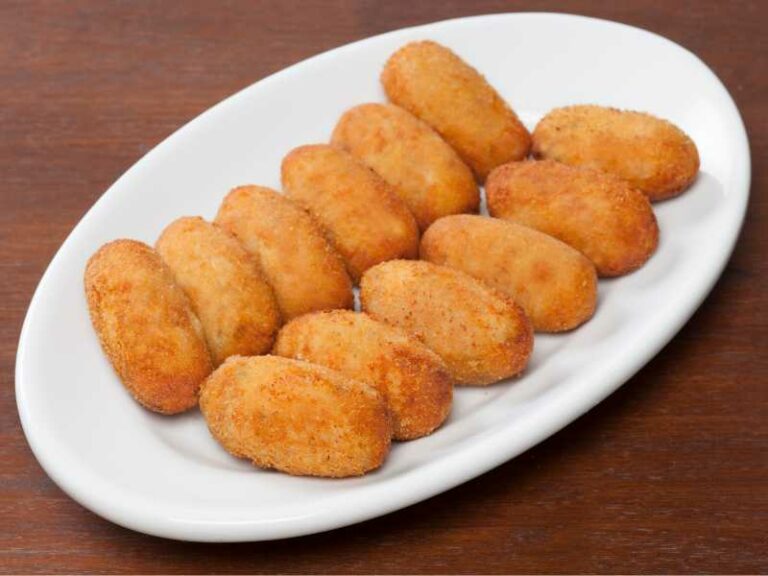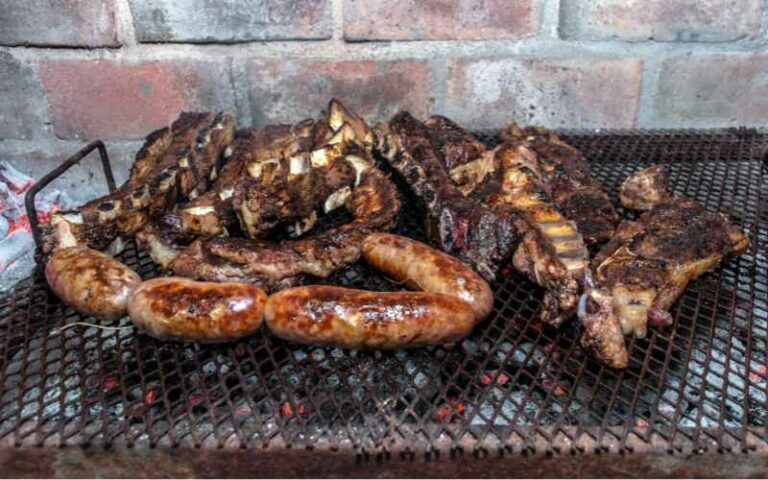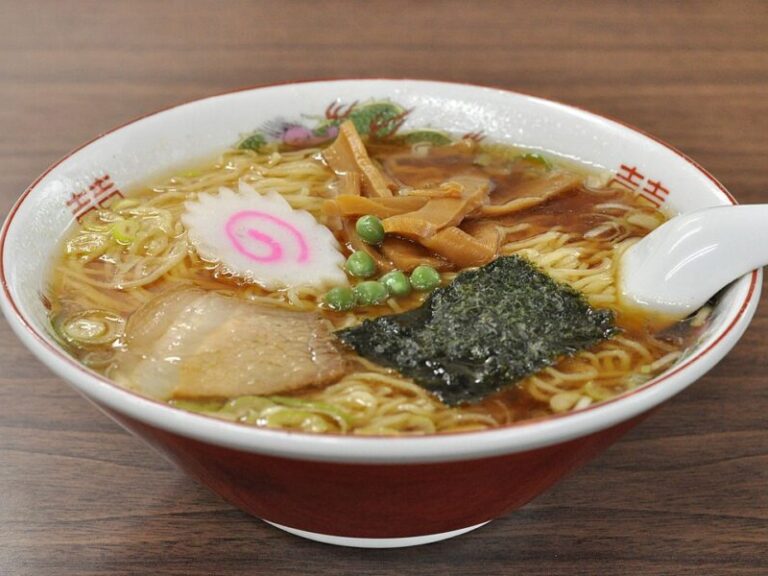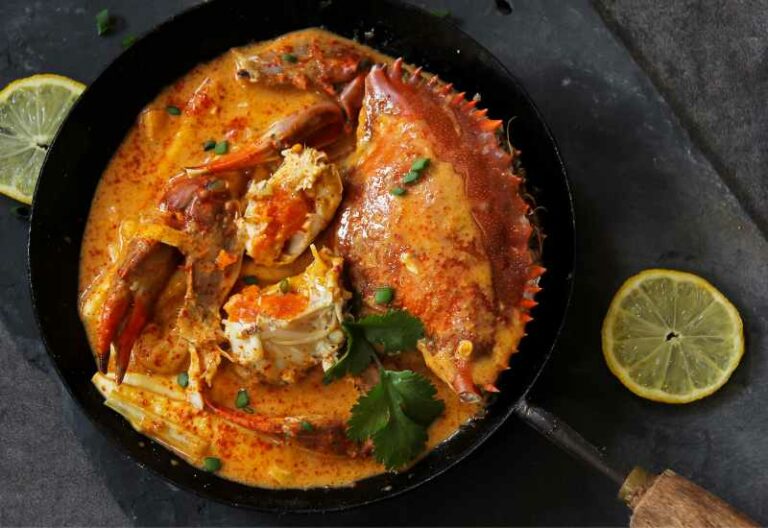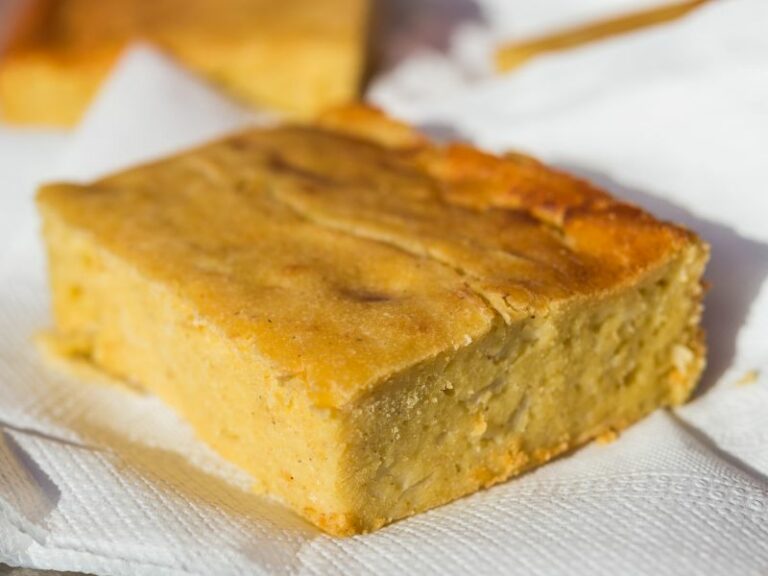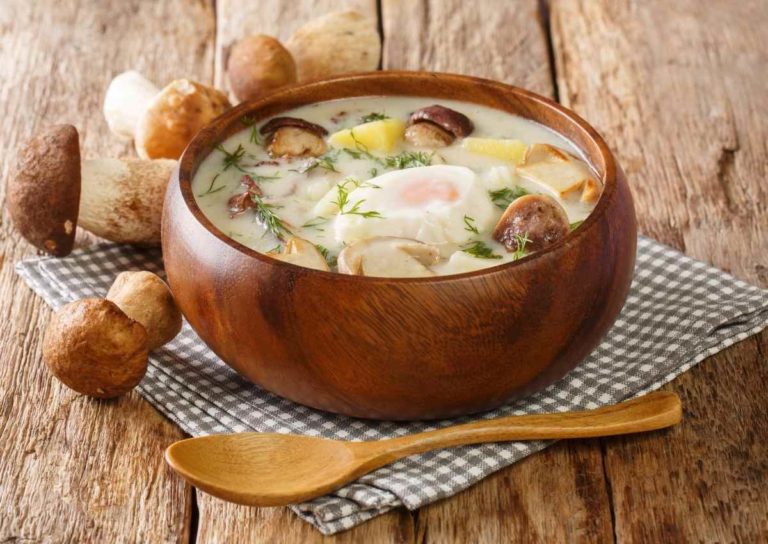Colombian Food: 23 Traditional Dishes of Colombia
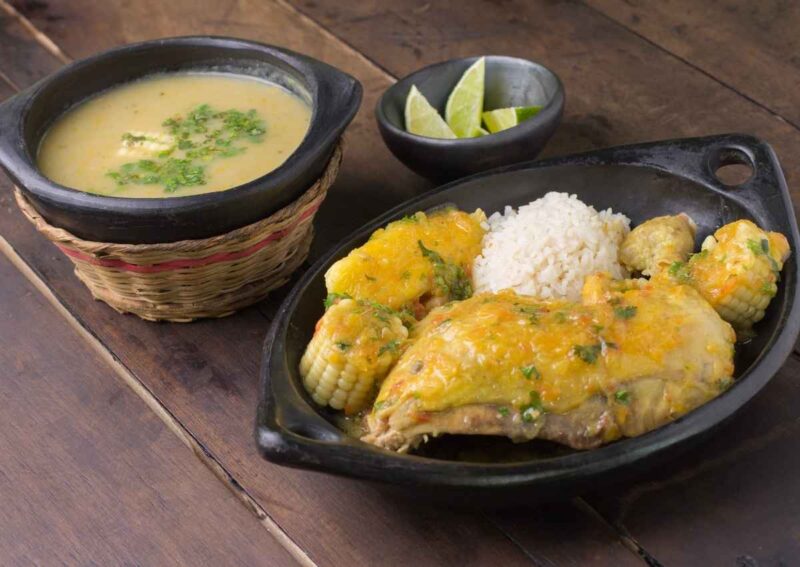
Colombia is a country situated on the northwestern tip of South America with a coastline on two major oceans; the Atlantic and Pacific. Colombia is a geographical contrast that has both beautiful beaches by the Caribbean coastline as well as mountainous highlands of the Andes where the largest city and capital, Bogotá, is located.
The climate is always mild and soothing, a good reason why Colombia produces some of the best quality coffee in the world. Arabica is the country’s most popular variety of coffee and is highly appreciated for light soft and well balanced notes.
Colombia is a highly diverse country and its cuisine reflects that. Colombian cuisine has unmistakable influences of the Spanish, Caribbeans, enslaved Africans and it’s indigenous people. The biodiversity grants it with a wide palate of indigenous ingredients, many unique to their own regions within the country.
Arepas (Corn Bread)
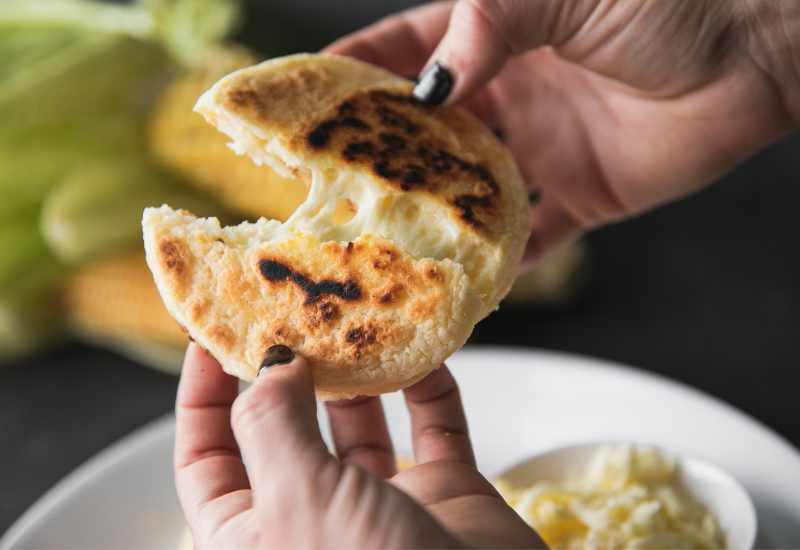
Arepas are flat round deep fried corn cakes made from maize flour, a staple breakfast snack and street food in many Latin-American countries.
The toppings can be as simple as butter or cheese, or slightly fancier with toppings like meat. They are also stuffed to make a more filling treat.
The most common variant is arepas con huevo which is arepas stuffed with egg. Beans, salad, shrimp, fish, avocados and tomatoes are among the other popular fillings.
Bandeja Paisa
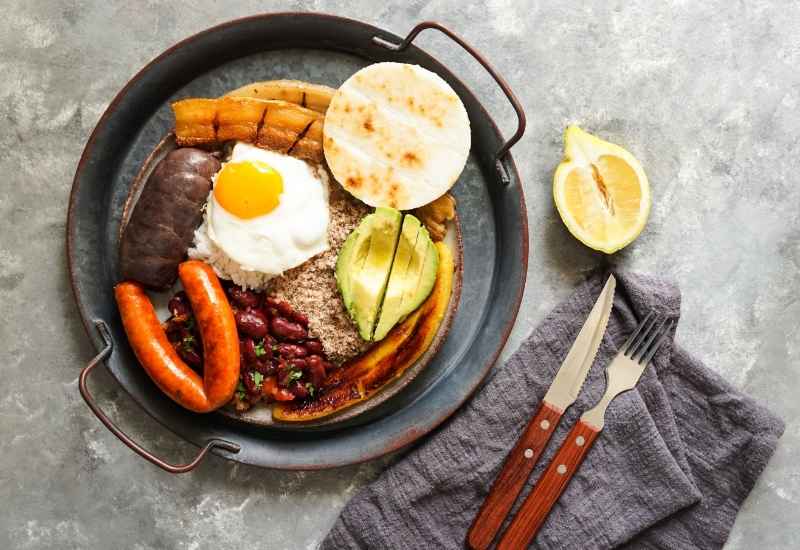
This signature Antioquia dish is quite simply a tray full of food for one person. In Spanish, bandeja means tray and paisa means locals of the area.
Bandeja Paisa consists of a generous mix of steak, ground beef, rice, fried egg, beans, morcilla (blood sausage), arepa, plantains, avocado, chicurron (fried pork belly) and chorizo.
In the past, Bandeja Paisa provided a full day’s nutrients for the peasants who worked in the fields. Even to this day it is sometimes eaten by some as their only meal of the day.
Lechona (Roasted Pig)
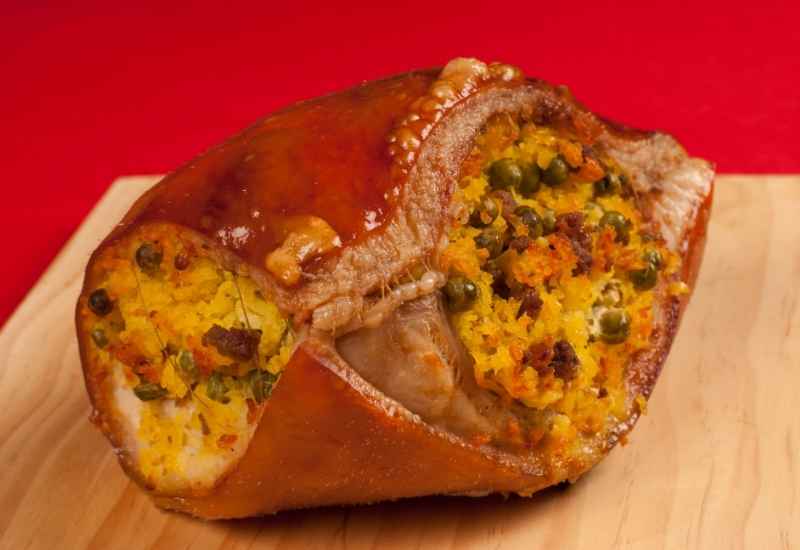
Lechona is an entire pig stuffed, roasted and served on a platter. The dish originated from the Tolima region that lies at the west of Bogotá.
The pig is heavily stuffed with rice, peas, onions and spices and then roasted in a clay oven for about 12 hours. The amount of work, time and patience it takes to make lechona is worth appreciating.
Sancocho (Colombian Stew)
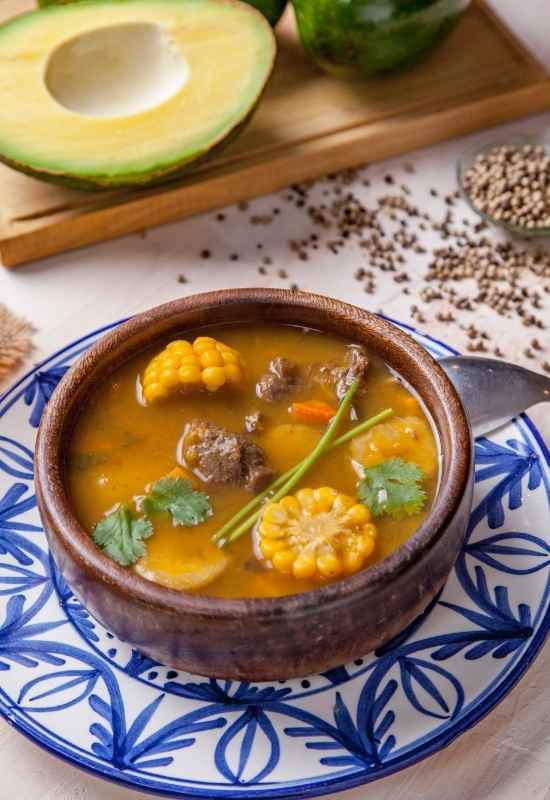
Sancocho is a stew cooked in a beef broth along with onion, potato, chopped cilantro, plantain and corn. The recipe may vary from region to region.
The most common recipe is typical to the Andean region, which is usually prepared during cooler days. Sancocho that is made along the beaches is prepared with seafood. This hearty soup is eaten with plain white rice, avocado and a hogao.
Tamales
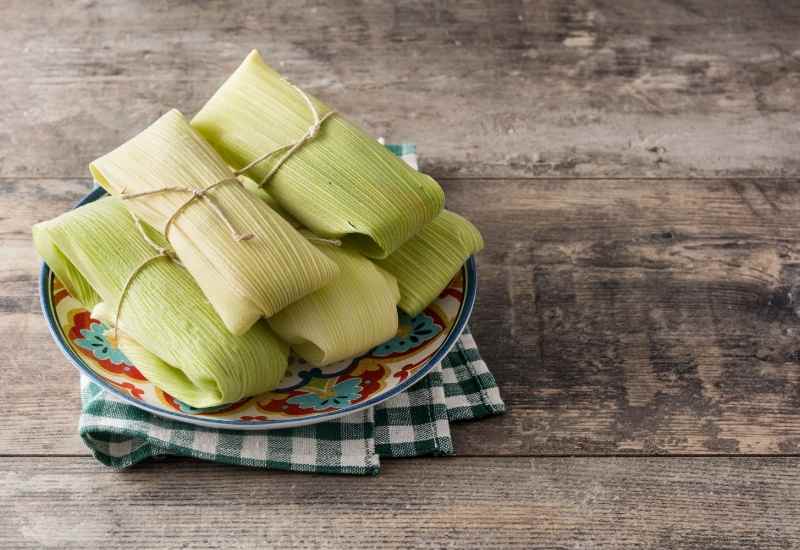
Though its origin is unknown, it is believed that tamales were birthed out of creativity and necessity. The Colombian tamales, unlike the Mexican tamales, are milder and less spicy in taste.
Another difference is that it is wrapped in a plantain or banana leaf. With numerous varieties, it tends to taste different from one region to another.
Ajiaco (Andean Chicken Soup)
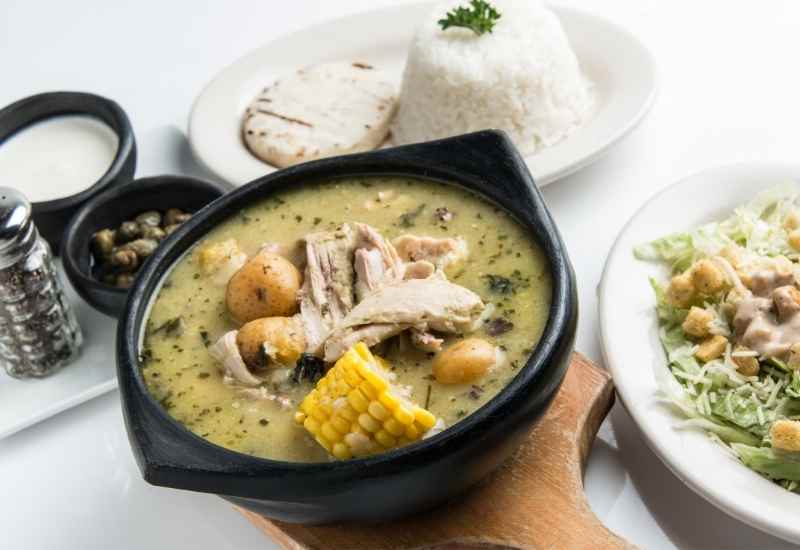
Ajiaco Bogotano is a chicken and potato soup that is particularly popular in the capital Bogotá – hence the name. The capital city is tucked snugly into the deeper mountains of the Andes and has a much cooler climate than the tropical coast and Medellin. The soup, therefore, feels like a warm hug in cold winter for the locals.
The dish is made with potato, avocado, corn, capers, sour cream and galinsoga herb, which is locally called guasca. A notable and interesting fact about this herb is that it is considered a weed in North America and is called the ‘Gallant Soldier’ in the US and ‘the Soldiers of Queen’ in the UK.
Pandebono (Cheese Bread)
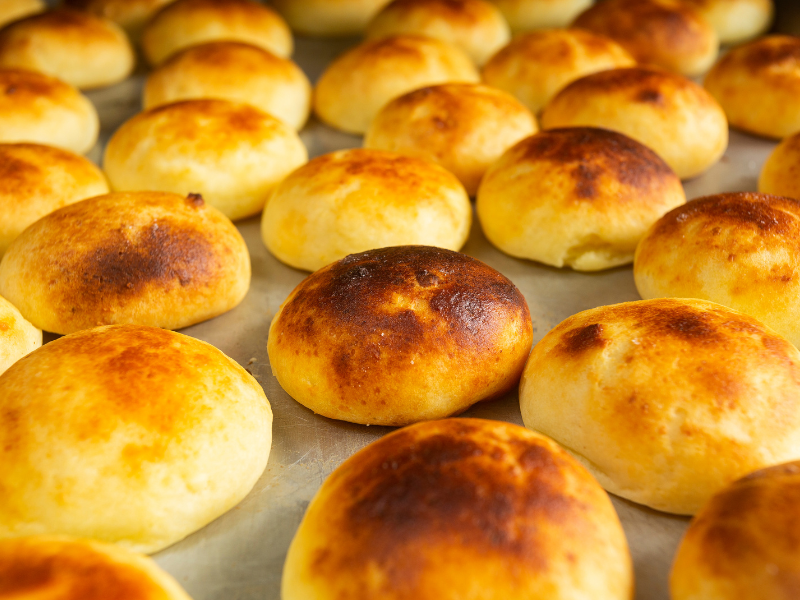
A distinctive bread made of cassava starch, egg and cheese, this is the food of the Valle del Cauca. Pandebano is usually round or ring shaped, is sticky and soft in texture, and is filled with flavorful cheese.
It is traditionally eaten with a cup of hot chocolate when it’s still warm. It can also be enjoyed with rich hot coffee, just dunked in like a doughnut.
Cuy (Guinea Pig)
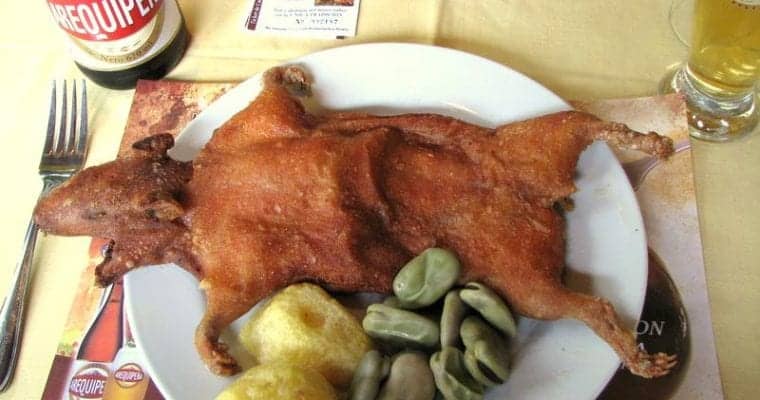
Whilst often to be considered a Peruvian delicacy, guinea pig (or Cuy) is also popular throughout Colombia.
There are different methods of preparing Cuy. Cuy al Horno tends to be spit-roasted whereas Cuy Chactado is fried in spices.
Torta Negra (Black Cake)
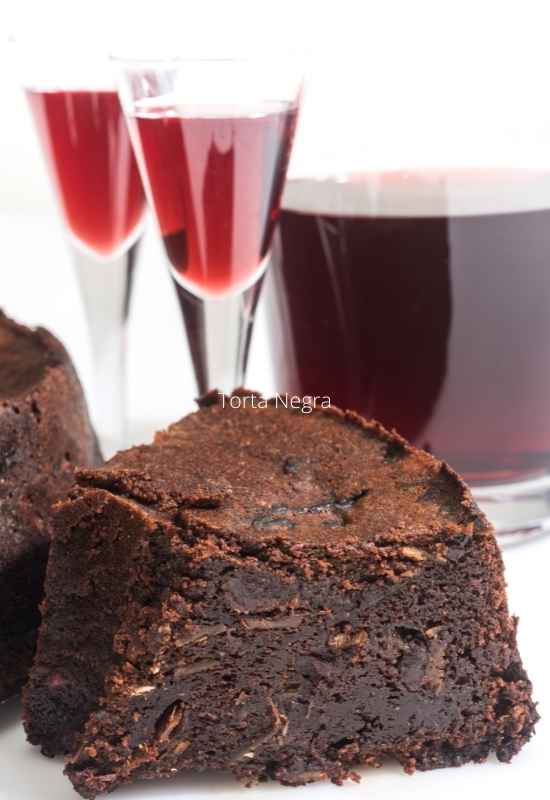
A rich dense fruit cake, torta negra is an absolute sugary blessing for fruit cake lovers. Candied fruits with nuts such as hazelnut and almonds are mixed with spices and softened in a concoction of rum and wine for about two to three weeks before baking.
Aguardiente – Burning Water
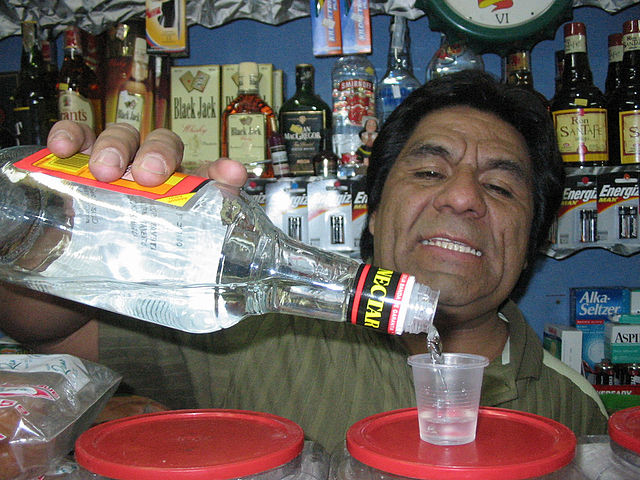
One of Colombia’s most popular alcoholic drinks is aguardiente. It is so strong (with alcohol content varying between 29% and 67%) that the name itself literally translates to burning water.
Made with sugarcane and flavored with aniseed, this drink is typically consumed in the Andean side of Colombia.
Buñuelos (Cheese Fritters)

A holiday staple street food, buñuelos are essentially balls of fried dough filled with cheese. These are very much like cheese fritters other than the fact that they are simultaneously savoury, sweet, soft and crunchy. These cheesy balls, accompanied by a cup of strong hot coffee, make for a very appetizing quick and easy treat.
Patacones
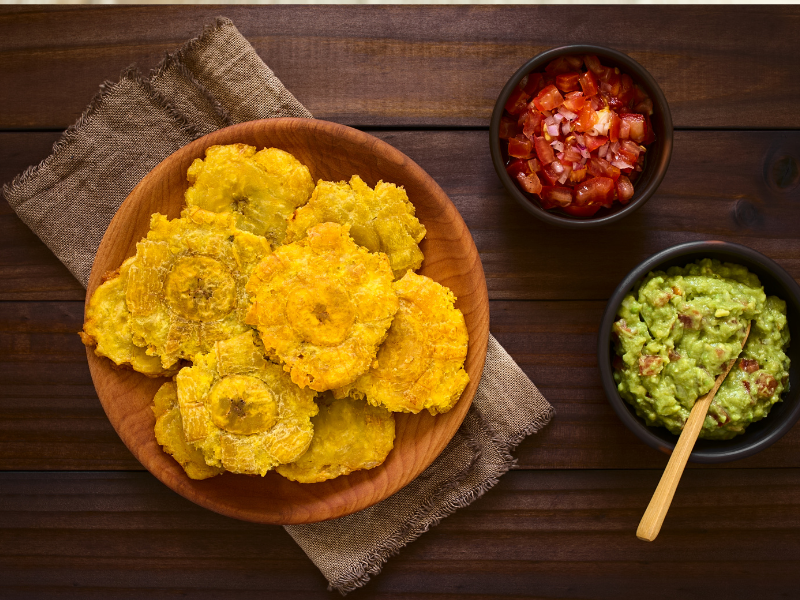
Patacones are a Colombian staple dish made from twice-fried plantain slices -often served as a small snack with dipping sauces, or as a side dish to a main meal.
The dish has deep roots in Africa but has grown to become one of Colombia’s most popular street foods and a huge part of home cooking all over the country.
Hormiga Culona (Edible Fat-Bottomed Ants)
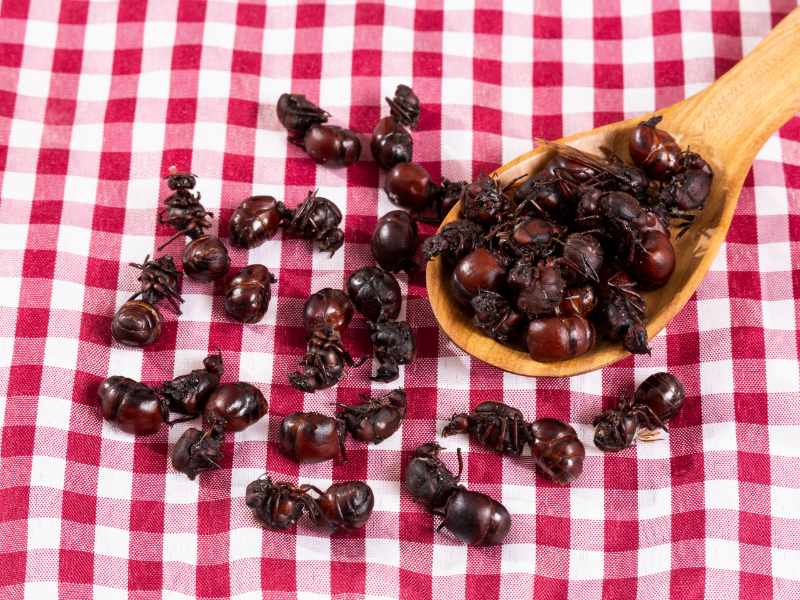
Somewhat of an unusual delicacy, Hormiga Culona are a type of leafcutter ant, typically female, that is eaten in the Colombian region of Santander. The ants are either fried or roasted and eaten as a snack.
Obleas
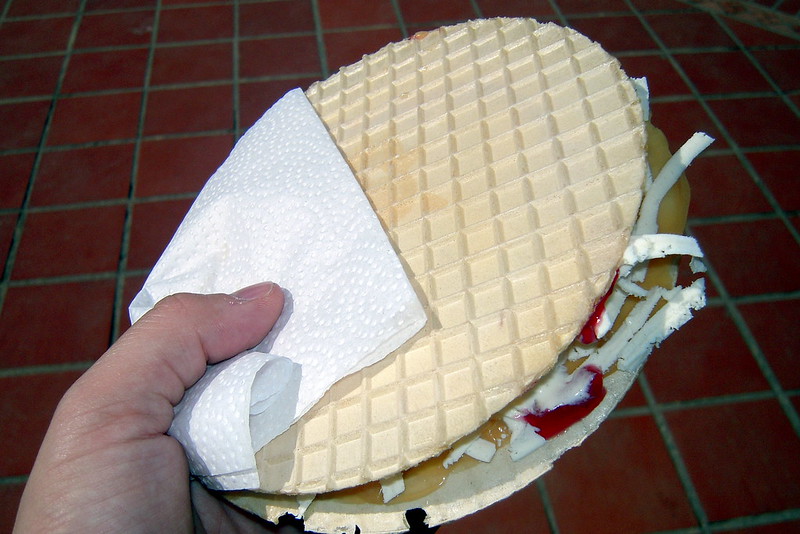
Obleas are sweet, round wafers typically spread with a caramel called arequipe, and topped with cheese, jams, sprinkles or fruits.
Obleas are popular throughout Latin America and come in a large number of varieties, both sweet and savory.
Changua (Egg & Milk Soup)
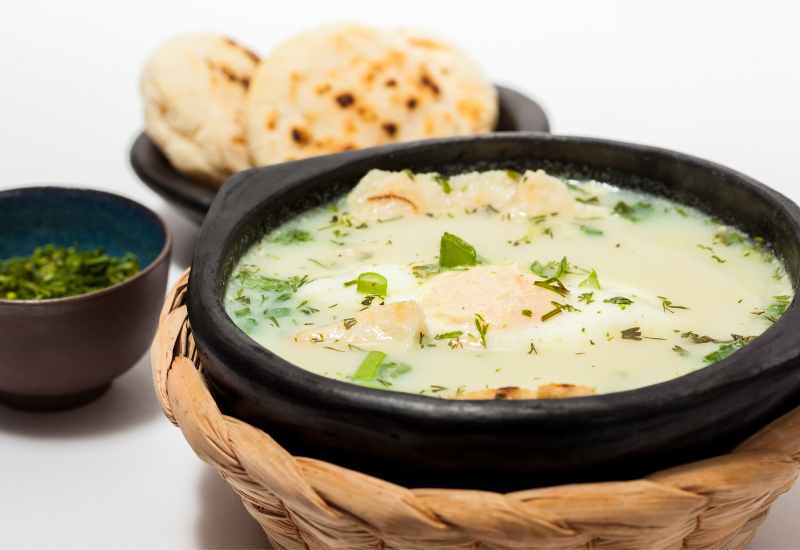
Changua is an egg and milk soup that is a common breakfast throughout Colombia. It is often considered to be a hangover cure and is a heart, warming start to the day.
Cazuela de Mariscos
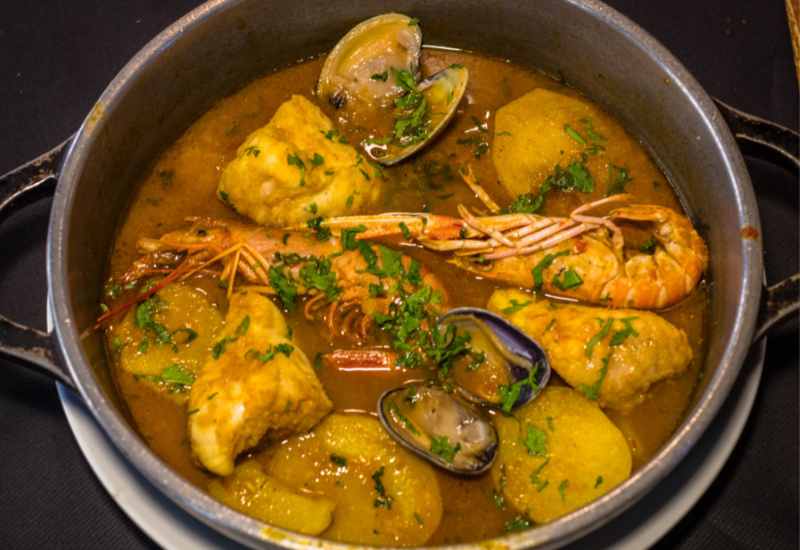
Cazuela de Mariscos is a seafood soup consisting of coconut milk, white wine, vegetables and a variety of seafood such as shrimp, clams, white fish, squid, snail and lobster. The dishes’ bright orange color comes from tomatoes and its creaminess from the coconut milk which also makes the soup subtly sweet.
Guarapo (Sugarcane Juice)
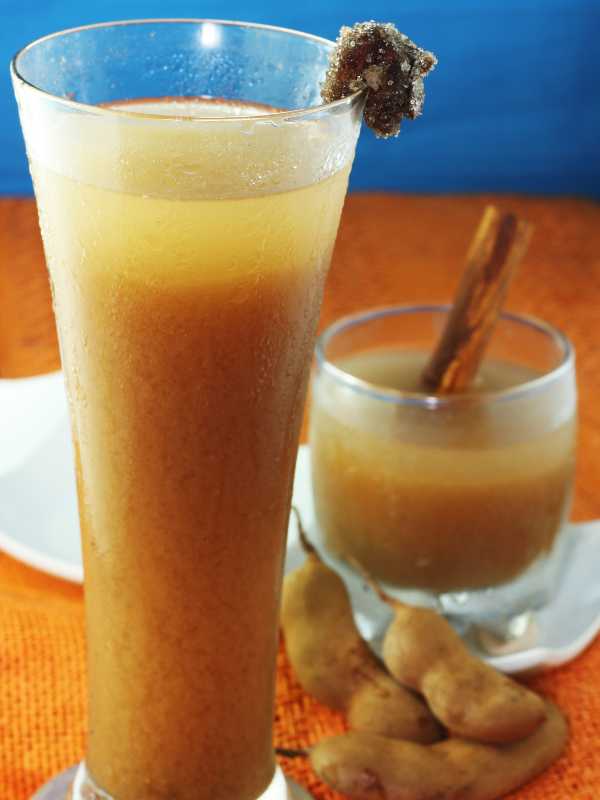
Guarapo is a traditional drink made from sugarcane juice enjoyed throughout Latin America. To make guarapo, fresh sugarcane stalks are crushed to extract the juice. The juice is then served as a natural, sweet and thirst-quenching drink. In some variations, guarapo is mixed with lime juice or served over ice for added flavor and coolness.
Hogao
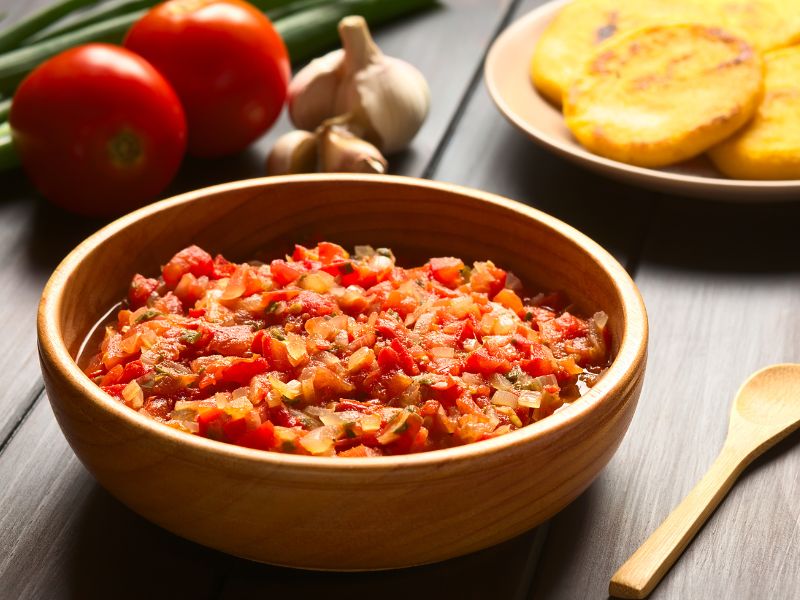
Hogao is a versatile condiment that is used in a variety of different Colombian dishes. The sauce is a Spanish-style sofrito, traditionally made with green onions and tomatoes with a savory and slightly tangy taste. Hogao is served with many different sides, from arepas to rice and beans.
Picada Colombiana
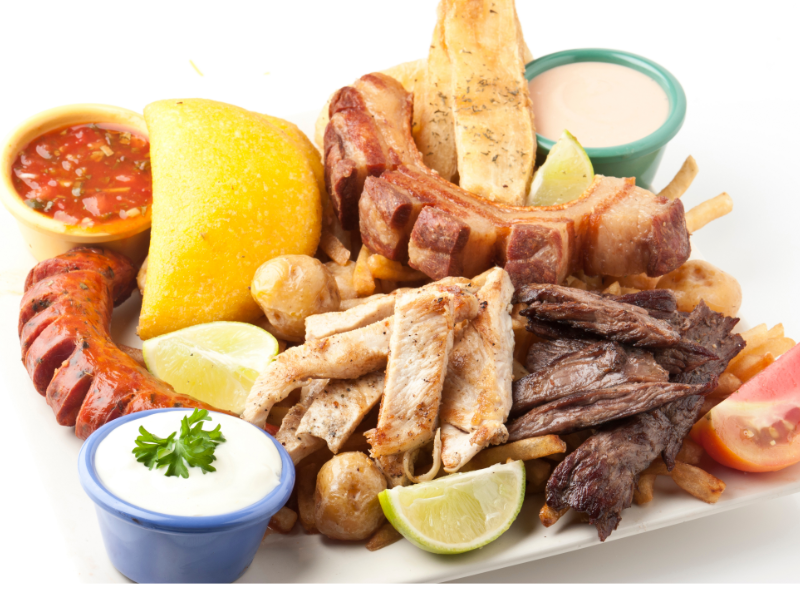
Picada Colombiana is a dish consisting of a variety of smaller meat and vegetable dishes served on a large platter, much like a charcuterie board. Popular picadas include grilled steak/chicken/pork, blood sausages, arepas, potatoes, chorizo, guacamole, and sweet plantain.
Arroz Con Pollo
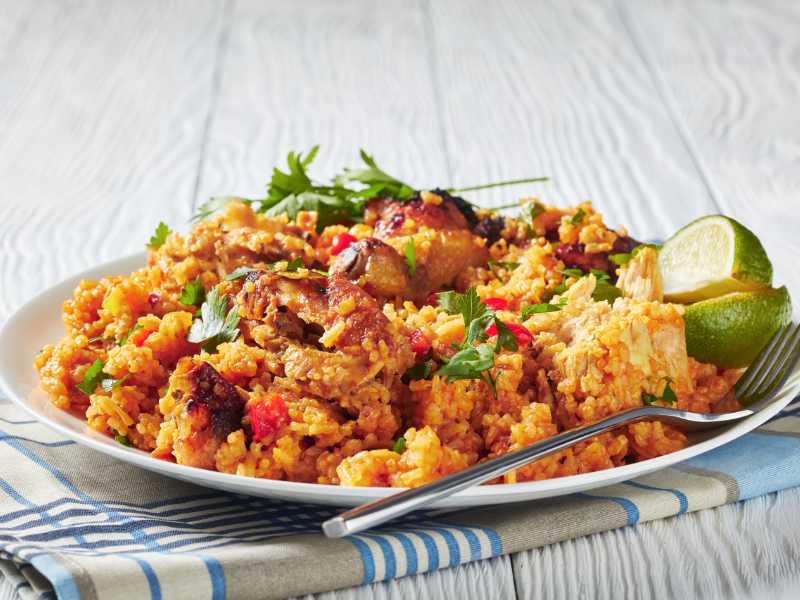
Arroz con pollo is a popular, traditional Latin American dish that combines chicken and rice with onions, bell peppers, garlic, and various seasonings such as cumin, paprika, and oregano. The chicken is simmered in a broth or tomato-based sauce until it becomes tender and infused with the rich flavors of the spices.
The rice is cooked separately and then combined with the chicken and its sauce. This allows the rice to absorb the delicious flavors from the chicken and the aromatic seasonings.
Revolcado
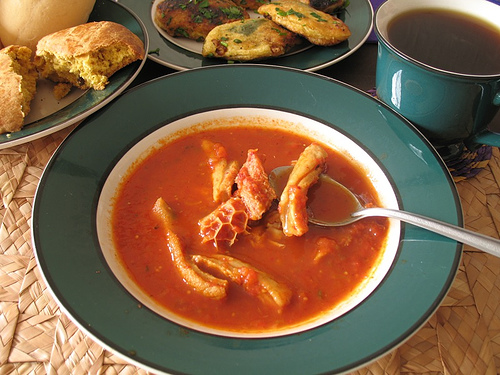
Revolcado is a stew made using pork offal cuts, fresh tomatoes, vegetables, herbs and spices like chilli peppers and annatto. The pork is cooked first while the chillies and tomatoes are blended together into a sauce.
The sauce is then added to the meat before cooking them together. It is usually served with rice or tortillas. Revolcado originated in Guatemala but is also now popular in Peru, Colombia and Bolivia.
Perro Caliente (Colombian Hot Dog)
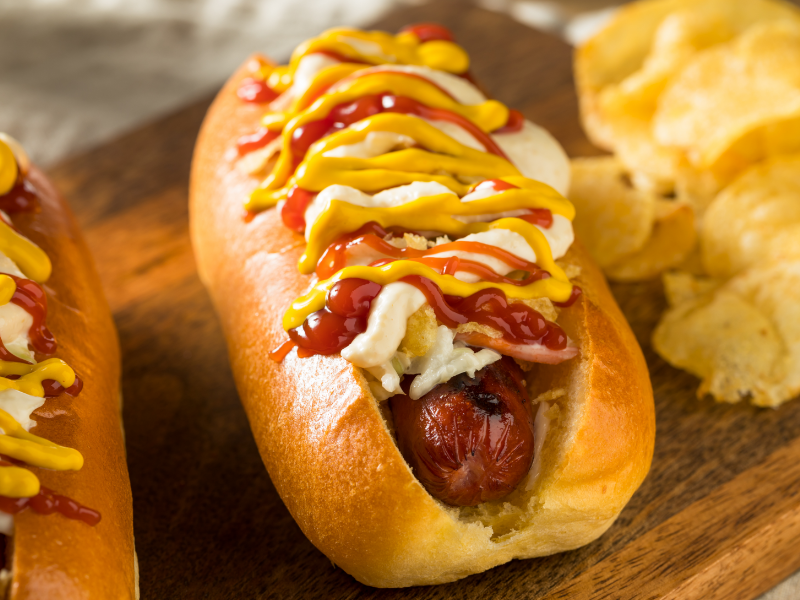
Perro Caliente or Colombian hot dog is a grilled or boiled sausage placed in a bun and topped with a variety of ingredients such as pineapple sauce, coleslaw, onions, and sauces like mustard and ketchup. It is commonly served at large celebrations, like parties, festivals and sports games.
Carimañolas

Carimañolas are a crunchy yuca roll, which are deep fried and filled with ground meat and cheese The meat is usually spiced with a blend of spices such as cumin and chili powder.
They are often eaten as a breakfast food or as a snack during the day.

